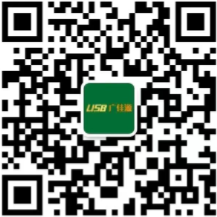 Mr. Chen:136-6225-2835
Mr. Chen:136-6225-2835
 Miss Chen:189-2385-0895
Miss Chen:189-2385-0895
Shenzhen Guangjiayuan Electronic Technology Co., Ltd
Mr. Chen: 136-6225-2835 (same WeChat account)
QQ: 979285705
Miss Chen: 189-2385-0895 (same WeChat account)
QQ: 2391552662
Chen Weiting :135-3824-4786 (same WeChat account)
Chen Weihao: 139-2459-4393 (same WeChat account)
Tel: 86-0755-33182327
Email: gjydz88@163.com
Website: www.usb-type.com
Address: Building 10, Hongxing Gebu Qixiang, Songgang Town, Bao'an District, Shenzhen, Guangdong Province
The new HUAWEI Mate X machine has been released, and the application's charging interface is the Thunderbolt 3 interface. The Thunderbolt 3 interface has the same appearance as the Type-C connector, and is compatible with the Type-C interface function. It also integrates the charging function of the Type-C interface. This means that you only need to connect a charger to any type-C interface on the left end of the computer to charge it. Let me analyze this Type-C connector from a hardware perspective and help clarify any confusion. Small size, supports forward and backward insertion, and has a fast speed (10Gb). This is specifically for the USB interface on previous computers, which is actually a bit larger than the microUSB on Android machines:
characteristic
USB Type-C:8.3mmx2.5mm
microUSB:7.4mmx2.35mm
and lightning:7.5mmx2.5mm
So, from the perspective of size, I cannot see the advantages of USB Type-C on handheld devices. The speed can only be determined by whether video transmission is needed.
Pin Definition

It can be seen that data transmission mainly consists of two sets of differential signals, TX/RX, and CC1 and CC2 are two key pins, which have many functions:
Detect connections, distinguish between front and back, distinguish between DFP and UFP, i.e. master-slave
Configure Vbus with two modes: USB Type-C and USB Power Delivery
Configure Vconn. When there is a chip in the cable, one cc transmits the signal and the other cc becomes the power supply Vconn
Configure other modes, such as when connecting audio accessories, dp, and pcie
There are 4 power and ground supplies, which is why it can support up to 100W.

Don't look like USB Type-C can support up to 20V/5A, but in reality, this requires USB PD, and supporting USB PD requires an additional PD chip, so don't assume that the USB Type-C interface can support up to 20V/5A.
Of course, there should be chips integrated together in the future.
Auxiliary signals sub1 and sub2 (Side band use) are only used in specific transmission modes.
D+and d - are compatible with pre USB standards.
Here's to say, USB3.0 only has one set of RX/TX, with a speed of 5Gb. USB Type-C uses two sets to ensure that both sides can be plugged in. However, in reality, only one set of RX/TX is used for data transmission, and the speed has already reached 10Gb. If the protocol is upgraded later and both groups are transmitted, it will be the same as DisplayPort at 20Gb.
workflow

The DFP (Downstream Facing Port) in the above figure is the master, while the UFP (Upstream Facing Port) is the slave. In addition to DFP and UFP, there is also a Dual Role Port (DRP), which can be used as both DFP and UFP. When DPR receives UFP, DRP is converted to DFP. When DRP receives DFP, DRP is converted to UFP. Two DRPs are connected together, where either party is DFP and the other is UFP.
The CC pin of the DFP has a Pull-up resistor Rp, and the UFP has a pull-down resistance Rd. When not connected, DFP's VBUS has no output. After connection, the CC pin is connected, and the CC pin of DFP will detect the pull-down resistance Rd of UFP, indicating that it is connected. DFP will turn on the Vbus power switch and output power to UFP. Which CC pin (CC1, CC2) detects the pull-down resistance and determines the direction of interface insertion, while also switching RX/TX.
Resistance Rd=5.1k, resistance Rp is an uncertain value. According to the previous figure, we can see how many power supply modes USB Type-C has. How can we distinguish it? By relying on the value of Rp, if the value of Rp is different, the voltage detected by the CC pin will be different, and then the DFP terminal will be controlled to execute which power supply mode.
It should be noted that the above figure shows two CCs, but in fact, there is only one CC line in the cable without the chip.
The cable containing the chip is not two cc wires, but one cc and one Vconn, used to power the chip in the cable (3.3V or 5V). At this time, there is no pull-down resistor Rd at the cc end, but a pull-down resistor Ra, 800-1200 ohms.

When both CC pins are connected to pull-down resistors<=Ra, DFP enters audio accessory mode, with both left and right channels and mic, as shown in the above figure.
USB Type-C and DisplayPort, PCIE
USB PD is a BMC encoded signal, while the previous USB was FSK, so there is incompatibility. It is unknown if there are any products on the market that can be converted.
USB PD is transmitted on the CC pin, and PD has a VDM (Vendor defined message) function that defines the device ID. Upon reading a device that supports DP or PCIe, DFP enters alternate mode.
If DFP recognizes the device as DP, it switches the MUX/Configuration Switch to change the Type-C USB3.1 signal pin to transmit DP signals. AUX assistance is transmitted by SBU1 and SUB2 of Type-C. HPD is a detection pin, similar to CC, so it is shared.
And DP has four sets of differential signals, lane0-3, and Type-C has RX/TX1-2, which is also four sets of differential signals, so completely replacing it is not a problem. Moreover, in the alternative mode of the DP protocol, USB signals and DP signals can be transmitted simultaneously. RX/TX1 transmits USB data, and RX/TX2 is replaced with lane 0 and 1 for two sets of data transmission. At this time, it can support up to 4k.
If DFP recognizes the device as DP, it switches the MUX/Configuration Switch to change the Type-C USB3.1 signal pin to transmit PCIe signals. Similarly, PCIe uses RX/TX2 and SBU1, SUB2 to transmit data, while RX/TX1 transfers USB data.
The advantage of this is that one interface can use two devices simultaneously, and of course, the conversion line can do it without any chips.
summary
The USB Type-C connector has ended the long-standing defect of USB plugging and unplugging, saving people a lot of time. Change direction for at least 2 seconds. According to the global 1 billion people plugging and unplugging USB once a day, there is a 50% probability of incorrect insertion, which takes more than 277000 hours, about 31 years, and is too terrifying. One interface handles three types of audio and video data, and the volume is relatively small. It can be foreseen that in the future, Android devices can be changed to USB Type-C interfaces. If only USB2.0 is needed, only the cables need to be remade without the need for chips, and the cost can be completely ignored.
Contact person:
Mr. Chen 136-6225-2835 (same WeChat account)
Miss Chen 189-2385-0895 (same WeChat account)
Chen Weiting 135-3824-4786 (same WeChat account)
Chen Weihao 139-2459-4393 (same WeChat account)
Address:
Building 10, Hongxing Gebu Qixiang, Songgang Town, Bao'an District, Shenzhen, Guangdong Province
 |
 |
| Technology 1 | Technology 2 |